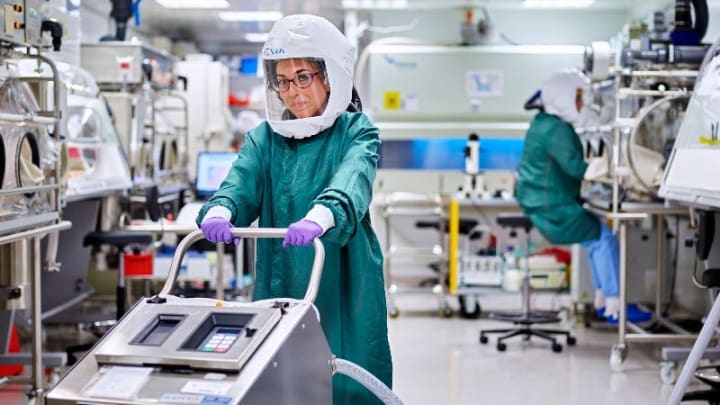
Though it can be prevented in children, treated, and even cured, tuberculosis continues to be the world’s leading cause of death from an infectious disease, ranking above HIV/AIDS. TB is a highly contagious mycobacterial infection causing fever, night sweats, a persistent cough, and extreme tiredness. While the number of TB cases and deaths is declining globally, an estimated 10 million fell ill with the disease in 2019, most of them in low- and middle-income countries.
According to The Lancet’s commission on tuberculosis, “The slow progress against tuberculosis … has resulted from a mix of political, societal, scientific, and strategic shortcomings.” Reasons cited by the commission include a lack of health system resilience; epidemiological trends, including the rise of drug-resistant TB; and stifled investment, both in programmatic interventions as well as research and development into improved medicines, vaccines, and diagnostics.
More on TB:
► Will new TB treatments reach those who need them most?
► Opinion: The impact of the technology revolution on tuberculosis
We need to accelerate the annual decline in cases and deaths significantly to reach the End TB Strategy targets, and research and development into new, better-tolerated drugs are key. Current treatment consists of a lengthy and complicated course of antibiotics. Typically, patients might take up to four different medicines for a period of six to nine months, while long treatment courses can last up to two years. Some patients do not finish their treatment, which creates opportunities for deadlier, drug-resistant strains — known as multidrug-resistant TB — to develop. The treatments for drug-resistant TB are even less well tolerated.
An exciting R&D pipeline
As an innovative pharmaceutical company, we know that we are well placed to support the development of new TB treatments. We are leading with our science, as this is where we know we can have the most impact. At our global health R&D site in Tres Cantos, Spain, around 120 scientists collaborate to discover new medicines for diseases that disproportionately affect those in LMICs.
Currently, we have a world-leading R&D pipeline of candidate TB medicines that have the potential to help eliminate this deadly and infectious disease. By using one or more of these alongside other medicines, we hope to transform the TB landscape to create a short treatment course that can be used for all patients, even those infected with resistant TB bacteria.
But the reality is that we are tackling a disease on such a scale — and for which treatment has become so challenging — that the efforts of a single company or research group may not be enough to achieve our goals as quickly and effectively as needed.
Share, collaborate, think collectively
To that end, we are excited to have recently announced our participation in the Project to Accelerate New TB Treatments, also known as the PAN-TB collaboration. This is a first-of-its-kind collaboration of philanthropic, nonprofit, and private sector organizations to accelerate the development of a treatment course for any form of TB, including multidrug-resistant forms of the infection.
The PAN-TB collaboration involves several other pharmaceutical companies and the Bill & Melinda Gates Medical Research Institute. It aims to create a treatment course that is shorter in duration, simpler to use, and better tolerated than existing options. As a partner in the PAN-TB collaboration, we will contribute our novel TB assets and share our scientific knowledge to develop a treatment regimen with the potential to treat and cure TB patients regardless of their resistance profile to current treatments.
What is clear to us is that the extent to which we are able to share, collaborate, and think collectively about solutions is now increasingly central to the fight against this disease.
This is also the case with our TB candidate vaccine, developed with the International AIDS Vaccine Initiative with the support of the Gates Foundation, the U.K. Department for International Development, and others. We have recently licensed the TB candidate vaccine to the Gates Medical Research Institute for its continued development and potential use in LMICs with high TB burdens. Early results show the vaccine could help prevent adults with latent TB infection from becoming sick with pulmonary TB for at least three years.
Research into new TB medicines and vaccines has not progressed at the pace required to finally beat the world’s biggest infectious disease killer, but we are working hard to change that. We know that the only way to achieve this is to join forces with external researchers and other partner organizations. While we have been doing this for some time — including as part of initiatives such as the TB Drug Accelerator Program — the need to work in partnership to beat TB has never been greater, and our commitment to the PAN-TB collaboration is a big step forward.
Together, we hope we can finally make a significant difference for the millions of people at risk from TB.




